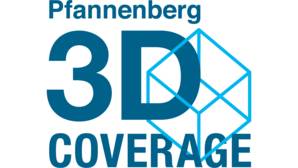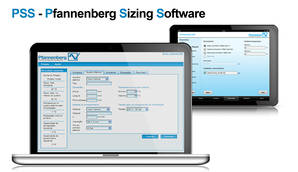1. Defining requirements.
Various standards and codes are in force which influences the planning of signaling solutions. However, many of them are merely superficial.
For example, the EU Machine Directive stipulates that machinery manufacturers must put in place suitable measures to minimise the risks of operating the machinery – but if signaling is a potential solution, there are no defined requirements for the performance of such devices. Since the machinery builder is responsible for mitigating operational risks, it is imperative to utilise signaling devices which offer sufficient effective coverage to operators and nearby personnel.
The 3D-Coverage approach gives them the answers needed to deploy adequate signaling to ensure that warning signals are perceived. With fire alarm systems, performance requirements for signaling devices have been formulated. To ensure adequate alarm perception, EU directives such as EN 54-23 require that ambient conditions within the space in which the signal is to be heard or seen are taken into consideration. Utilising the 3D-Coverage approach, planners and system designers are not only assured of adequate notification appliance performance since they can also gain confidence in designing the most cost-effective solution.
2. Taking environmental conditions into account.
Many harmful situations, including fire and gas leaks, chemical spills, machinery hazards, moving equipment dangers, and other workplace safety concerns can be effectively mitigated only when signaling systems are properly designed. An examination of the space to be protected produces vital information that must not be overlooked when planning for safety.
Where are people situated? What environmental influences and risks are they exposed to? What are the particular features of the building? It is essential that these issues be considered at the planning stage in order to ensure the safety of all personnel within the space in which the alarm signal must be seen and heard.
Unfortunately, in many circumstances, the environmental conditions surrounding the application are not thoroughly examined or understood. For example, an ambient noise level that is assumed to be lower than it actually is will inevitably result in signal tones that are difficult to hear or cannot heard at all.
When the 3D-Coverage approach is utilised, environmental factors are taken into consideration at the very start of the planning process. Not only does this represent a more cost-effective procedure, but more vitally, the resultant system design is safer for personnel and guaranteed to meet with final approvals.
3. Comparing product information.
Information supplied on technical data sheets alone often results in unrealistic assumptions about the actual performance of signaling devices. Details such as the transmission distance and coverage envelope must be obtained if they are to be taken into consideration when planning alarm systems.
For the 3D-Coverage approach, Pfannenberg supplies transparent and unambiguous information about the performance of a product in a given space, taking into account defined environmental conditions.
4. Ensuring optimal sizing.
It is only when all factors, such as environmental influences, local codes and requirements, and true overall performance of the signaling devices to be used are understood, that a properly sized and effective alarm notification system can be designed.
Possible consequences of inappropriately designed signaling systems include under-sizing, over-sizing, safety to personnel, cost overruns, system non-acceptance, and loss of machinery and assets.
Under-sizing, or using too few or less-capable devices, can be the result of relying solely on published specifications for notification appliances and not taking environmental conditions into account. This can lead to a safety risk or non-acceptance of the system by the local authority having jurisdiction (AHJ). When re-designs are mandated, costs will increase.
Over-sizing, or using too many devices, can unnecessarily raise costs for materials, installation labor, and maintenance. A holistic approach at the planning stage is the only way to ensure effective alarm notification, safety, and design efficiency. With 3D-Coverage, Pfannenberg emerges as the logical choice for helping planners and system designer fulfill these requirements.


